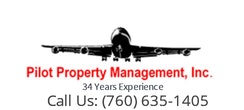Towing is a sensitive issue within a community. Some members relish the idea of towing an idiot that parks in a certain place such as a fire lane or in front of a garage entrance. While those two places are relatively easy to determine and can cause an immediate tow by a towing company it is the other kind of parking or should I say storing or mis-parking that creates the greater discussion. Parking in someone’s else’s spot or leaving a vehicle too long in a space or parking in guest parking or not visibly displaying a parking sticker and so the list goes on are less easy to decide and yet communities do have to decide if only because someone has to sign off on the tow. There are two keys to having a successful towing policy. One is the set of rules published to the members, and the second is the selection of a towing company and its signage and policing behavior. Without the first a community can get itself into a world of harm and cause substantial cost to a vehicle owner never mind the inconvenience. All too often the rules can be silent on a particular action or behavior and that will result in unnecessary ill will within the community. Selecting a towing company that will support you in the case of an error in judgment or mistaken action is also vital. As for the original question. It’s totally up to the association. If it’s a big problem it will disappear with effective towing if it’s a small problem maybe it will resolve itself with the departure of a certain owner or even tenant.
1514
